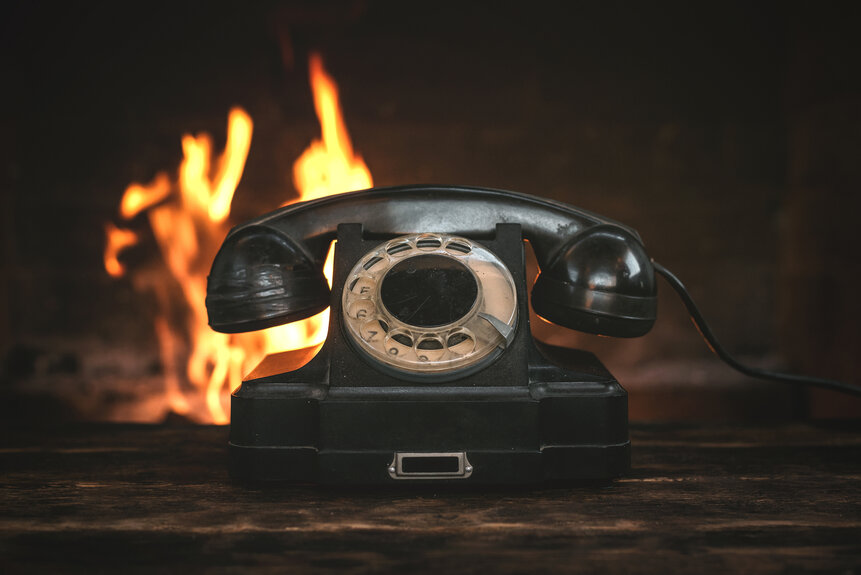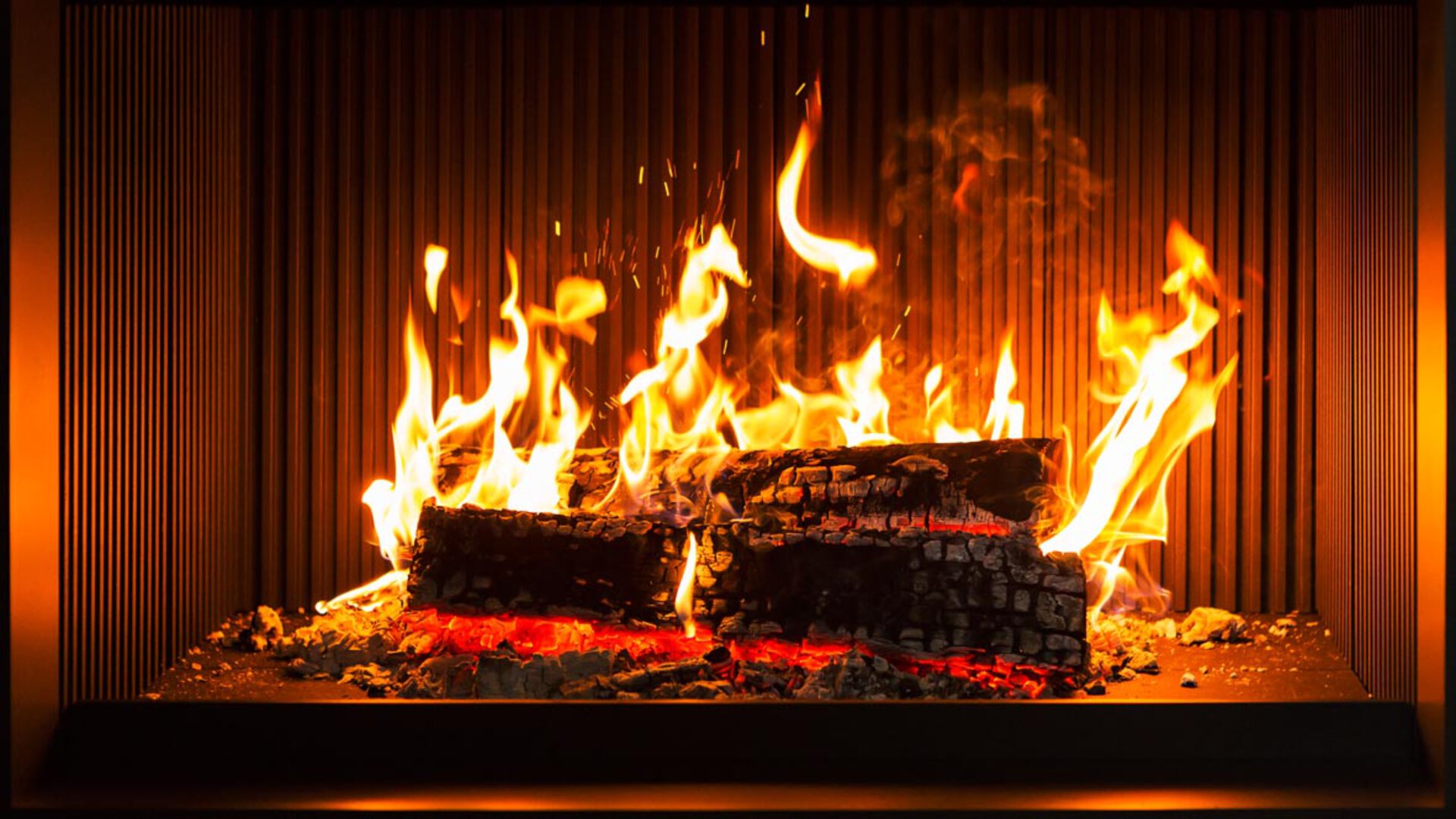Furnace technology
Tiled Stoves & Fireplaces
BRUNNER has become known above all for its stoves and fireplaces. Our devices not only comply with all current standards, but most of them even fall well below the currently applicable emission limits. The high-quality workmanship of selected materials also promises a long service life. The customised design is completed by your local furnace builder, who will create a whole piece of art, based on your ideas.
Supply air for the fireplace
What should you take into account?
There is no wood combustion without oxygen. Most stoves and fireplaces draw their combustion air directly from the room where they are installed. An outside air duct for external air supply is also possible. In case of doubt, the district chimney sweep can help. The air supply option depends on the type of fireplace. Three types of fireplaces can be distinguished: room-air-dependent fireplaces with or without a connection for external air supply, or room-air-independent systems.
Outside air supply
A method that is mainly used for retrofitting stoves is described here: Drill a simple hole in the wall behind or in the floor under the stove. You can then lead an aluminium flex pipe or an air strip outside through the opening. These are reconnected to the stove with a connector. Now, the fireplace is supplied with air from outside the house or from the cellar. The air opening to the outside should also have an air flap and an outside air grid for protection, for example against insects.
An air flue chimney system (LAS) is another possible external combustion air supply. Here, the combustion air system for the fireplace is integrated directly into the chimney. The combustion air comes in through an air duct from above via the roof and is draught to the stove. The combustion gases, which are produced during the combustion process in the wood stove, go outside as usual. Air flue systems are mainly used in new buildings or chimney renovations.

Negative pressure is the competitor
In addition to the chimney draught mentioned above, another dangerous negative pressure can occur. This can be caused by defect, irregular or unbalanced exhaust air systems, ventilation systems or extractor hoods that are located near the fireplace.
What impact do these exhaust systems have on the operation of the ambient-air-dependent fireplace? They extract far too much oxygen from the room at once. If, for example, an extractor hood is switched on and set to exhaust-air mode, it can extract around 2,000 cubic metres of air from the living space per hour, and that without fresh air flowing in at the same time. This leads to a negative pressure that can reach 50 pascals. That alone is not dangerous. If, however, wood is burning in the stove at the same time, combustion gases and harmful carbon monoxide are not transported out through the chimney, but are drawn into the room where the wood stove is installed. This negative pressure can be avoided if you regularly open wide a window or the window lift switch of the exhaust air hood. Another safe option is the BRUNNER "negative pressure safety control (USA)", also known as the "negative pressure monitor". It prevents a dangerous negative pressure from occurring in the area of the fireplace in the first place. It works like this: The negative pressure monitor is connected to the extractor fan or an other ventilation system in the house. It constantly measures the pressure difference between the installation room and the chimney. If this pressure drops below a set limit, the corresponding devices are immediately blocked and switched off. automatically The negative pressure safety control is always activated when the stove is put into operation.
Motor for fireplaces and stoves
The chimney and the fireplace effect
Without a chimney, there is no fireplace. This is because the chimney has the important function of supplying the fireplace or stove with oxygen for heating while releasing heating and combustion gases to the outside. The "fireplace effect" is just this. It is a physical principle based on the different densities of hot and cold air: When wood or pellets burn, different gases flow out. The air heats up. Because hot air has a lower density and is lighter than the cold fresh air outside the house, it rises through the chimney and is drawn out. This creates a negative pressure in the fireplace or stove. This negative pressure draws fresh cold air in. This effect - also called the Bernoulli effect - ensures that the combustion process is constantly supplied with oxygen. The chimney ensures the smooth functioning of the fireplace. It is, so to speak, its engine.
However, the chimney design - brick, stainless steel or 2-shell system - as well as the dimensions, cross-section and the stove pipe must be fit for the corresponding fireplace or stove. Otherwise, the necessary negative pressure cannot be generated.
In the worst scenario, the effect of the fireplace can even be reversed, in which case the chimney draws in cold air and forces the flue gases into the installation room instead of discharging them outside. This can also happen, for example, if wind blows into the chimney. To prevent this, either a flue gas flap can be installed in the chimney, or any other method be used to avoid the air inlet.
The calculation of the chimney cross-section based on a DIN standard is also recommended. It should already be carried out by the specialist company during the planning of a chimney and before purchasing a fireplace. The district chimney sweep can help here, he also knows all other legal requirements. Even if you do not buy a wood stove when building a house, a chimney should be planned. A chimney increases the value of every building. You can install it later on, but it is time-consuming and more expensive.
Have your wood stove and chimney serviced regularly by a specialist company in order to avoid malfunctions, deposits and a possible soot fire.
Heating with wood
Light the stove correctly
Is there anything more beautiful than a fireplace? It not only warms you, it also creates a homely atmosphere. But this requires correct operation, including the ignition. Whether a fireplace burns optimally and with low pollutant emissions is mainly up to the user. Heating errors can, however, be avoided.
There are two different ways of lighting a fireplace: from above or from below, depending on whether the system is grateless or has a floor grate. For proper lighting, kindling is needed, such as small pieces of wood, a fireplace lighter or the Fidibus by Brunner. The length of the firewood depends on the size of the fireplace or stove; its circumference should be less than 20 centimetres. The amount of fuel placed in the firebox varies. To ensure proper heating, you should stick to the manufacturer's tested and specified quantity. The correct supply of air is also an influencing factor.
Under no circumstances should petroleum or spirit, plastics, waste, treated, glued, coated or painted wood, bark briquettes or chipboard be used for lighting. A clean and technically flawless fireplace and a suitable chimney are essential for low-emission heating and good calorific output. Have your system inspected regularly by a chimney sweep.
Combustible wood
Whoever heats with wood not only satisfies his basic need for warmth. A masonry fireplace or tiled stove is also energy-efficient and fulfils ecological requirements, which are becoming crucial for more and more customers. Wood is a renewable and regionally available raw material. It is CO2 neutral, its heat generation is high and it is friendly to the environmentally, if the appropriate technology is used. To ensure that environmental compatibility of a masonry heater does not depend solely on the skills of the furnace builder, BRUNNER builds its masonry heater fireboxes from dry-pressed high-quality fireclay modules. The emission specifications provided by the law are thus fulfilled in all the combustion chamber geometries offered.


Firewood
The optimal wood storage
Whether the fireplace burns properly and the fire is easy to kindle also depends on the type of wood and how it is properly stored. To save space, logs are usually stacked. The stack height varies with the shape and size of the logs. The most important thing is that the fuel is stored in a dry and well-ventilated place, because only dry wood has a high calorific value. Damp wood, on the other hand, not only burns poorly, it also produces little heat, produces enormous smoke and leads to heavy soot residues. Dry, roofed and well-ventilated shelters where no moisture can rise from the ground are perfect for wood storage, preferably against a wall, such as the wall of the house. Keep a distance of about ten centimetres so that the air can circulate. This speeds up the drying of the wood. Within the stack, the logs are placed so that wind can pass through. The base is formed by thin logs placed at right angles to the direction in which the firewood logs are stored, creating sufficient distance from the ground. A shed is also a good fit to store firewood. However, if the wood is still humid, it should be piled up outdoors where there is enough draught. Closed cellar rooms or piles of wood wrapped in foil are inappropriate.
Firewood
Which wood is suitable for heating?
Logs from beech wood have the highest calorific value, followed by maple, cherry, ash or hornbeam, which is, however, difficult to split. Softwoods such as alder, poplar and willow should not be used as they leave a high ash layer. Coniferous wood from larch, pine or spruce is less suitable, especially for open fireplaces, because sparks fly high up. In this case, it is advisable to use an appropriate spark screen. Open fireplace screen by BRUNNIER are hardly visible.
Advantages of heating with wood
In contrast to the fluctuating oil prices, wood is much cheaper, more stable and its costs can be foreseen. Wood is a constantly renewable raw material. According to the German Forest Farmers Association, more wood grows in this country than is consumed. Wood does not have to be transported over thousands of kilometres, it is available regionally, so it has a lower ecological impact. Heating with firewood logs is climate-neutral it contributes enormously to climate protection. Provided that the stove is lit correctly and burn-offs and heating are optimised and clean.
FIDIBUS
Promising lighter sticks
Everyone knows it: kindling that goes out again after a short time or that burns without any visible success, while it still releases harmful gases into the environment. The wood fire may flicker, but it does not ignite appropriately to start the longed-for crackling fire. You get annoyed and still sit in the cold. That's over now - because our natural, health-harmless fidibuses not only sound like magic, they are. Lighting up has never been so easy, and if you do it right, it even saves money, because often half a lighting rod is enough.

Once you have found the furnace builder you trust, they will be able to determine the suitable heating insert fit for the requirements of your home, according to your wishes. He will provide you with a cost estimate.
You are welcome to use our social media channels to get inspired. With the help of pictures, the furnace builder can better understand your ideas.



































